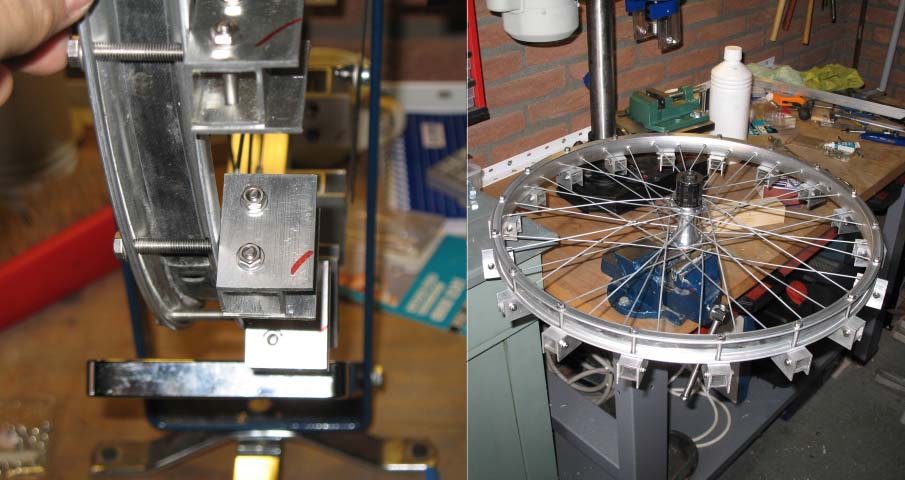
Ok, i hope the pictures will appear ( i can't see them while i'm typing). Just a summary of what i want to make: rotor, 18 magnets, stator 27 coils, 3phase system. When i mentioned 1.4V earlier: that's what i want to achieve per coil, at relatively low rpm
Anyway, thanks again for info & support until now. The picture shows a close look at "the magnet shoe" which will fit exactly for an axially magnetized NeoDymium magnet, 40*20*10mm. If it is glued in the shoe, only the necessary surface is exposed (except for the outer ends). The other pic shows the whole wheel in my vice, but in the position it will be used, axis vertical, magnets facing down. I won't show you any stator pictures yet, because it's a dull picture, just a plain board, with a self made flange in the middle, no coils made yet. Bearings & stuff is a story for later, i have some ideas, but first things first.
As you see, i've used box-shaped aluminium tube, cut into pieces of 40mm, drilled mounting holes for the screws. The sides (red marked) are also aluminium, sticking out just under 10mm, to "clamp" the magnets in place.
The rotor will house 18 magnets/magnet shoes so i drilled 18 wholes straight through the rim sides (before the wheel was spoked!). I did 18 max, because otherwise the sturdy spoked wheel will collapse under the spoke tensions.
I may still finalize this contruction (as in the picture), glue in the magnets etc. and prepare for the the worst, OR..
Just a thought:
I can remove the shoes, disassemble them, use same sized steel boxes instead of aluminium, re-attach the aluminium side shoulder plates (no steel for that, as it will short-circuit fieldlines from coilfacing magnet end to back end)...
The next step is a tricky one: Instead of re-attaching the new completed shoes straight onto the alu wheel rim again, i could make a thick steel bed (40mm wide, approx. 100mm long, 4-5mm thick), drill two wholes according the whole-whole distance on the rim. So have this steel bar beneath each magnet shoe pair. This will create a horse-shoe magnet effect over two adjacent magnets. Multiply this action by 9, and my wheel will contain 9 separate "horse-shoe" magnets. It will at least arrange some of the fieldlines. I haven't yet calculated what it would do to a 3phase coil arrangement, but maybe that's not something to worry about now.
My intention still is to keep a "light" rotor, no too much mass to accelerate, also for not running a risk of having too much weight on the outer edge of a large diameter rotor, making it more vulnerable for bending and hitting the stator.
I think this may be a good compromise between steel mass and a lightweight rotor; Do you think? Objections? Recommendations?
mr mills